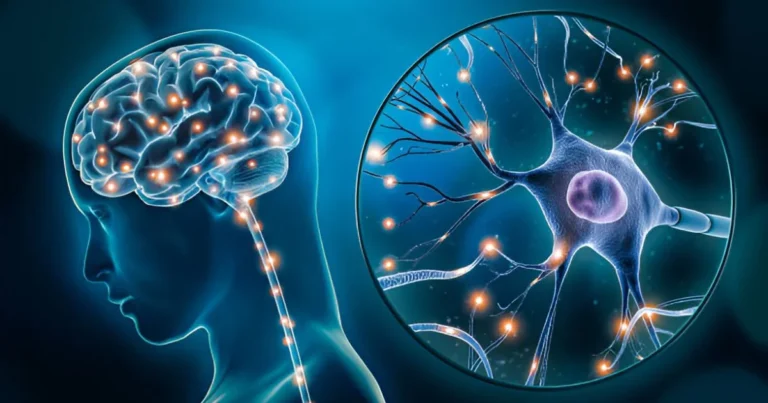The hidden powers of classical music on the brain
Can we train the brain the way we train a muscle? For neuroscientists, the answer is yes, and classical music stands among the most powerful tools to achieve this. Thanks to advances in neuroimaging and behavioral research, we now understand that listening to or practicing music profoundly influences memory, attention, emotions, and even brain structure. This article delves into what science reveals about the impact of classical music, from Mozart to Bach, on the human brain.
Classical music, particularly the works of the great masters, is built upon a sophisticated architecture that intensely engages the brain. Unlike background noise, a well-structured musical composition activates multiple brain regions simultaneously, stimulating auditory processing, memory, attention, and even motor functions. This complexity of engagement explains why music has become a central subject of research in cognitive neuroscience.
When music becomes brain gymnastics
In the early 1990s, the now-famous “Mozart effect” sparked global interest. Popularized by a study conducted by Rauscher, Shaw, and Ky (1993), the research suggested that listening to Mozart could temporarily enhance spatial reasoning. Published in Nature, the study showed that students who listened to a Mozart sonata for ten minutes performed better on a spatial reasoning test than those exposed to silence or verbal relaxation. While subsequent studies have nuanced these findings, this early work opened the door to a wave of scientific investigations into the neurocognitive effects of classical music.
🔗 Read also: Sounds in conflict: how our brains juggle music and language
The influence of music extends far beyond a few minutes of listening. More recent studies show that regularly practicing music, especially classical, can lead to significant structural and functional changes in the brain. A landmark study led by Gottfried Schlaug at Harvard University compared the brains of professional musicians with those of non-musicians. The results revealed that musicians had a larger corpus callosum, the structure that connects the two hemispheres of the brain, suggesting more efficient interhemispheric communication. Additionally, musicians showed greater development in the motor cortex (involved in planning and executing movements), the auditory cortex (responsible for sound analysis), and areas of the prefrontal cortex, which play a key role in attention, working memory, and decision-making. These changes reflect brain plasticity driven by consistent musical practice.
This neuroplasticity, or the brain’s ability to reconfigure itself based on experience, is especially pronounced in musicians who begin training at an early age. In a seminal study, researchers followed two groups of six-year-old children: one group received piano lessons, while the other had no musical training. After 15 months, the children who practiced music not only improved their musical skills but also showed enhanced development in brain regions involved in fine motor control and auditory processing. This study highlights how musical training can accelerate brain development well beyond artistic capabilities alone.
🔗 Explore further: Inside the freestyle mind: How rappers hack the brain’s creative circuits
The healing power of simply listening
What about the effects of simply listening to music, without formal training? Classical music, with its rhythmic and harmonic structure, appears to have a unique effect on emotional regulation and stress reduction. Neuroimaging studies have shown that listening to classical music activates the limbic system, particularly the amygdala and hippocampus, both of which are key players in emotion and memory processing. Notably, these effects occur even in individuals with no active musical training; passive auditory immersion alone can yield measurable benefits.
Multiple studies have shown that classical music can reduce anxiety, elevate mood, and modulate physiological responses such as heart rate and blood pressure. These findings point to a therapeutic potential for music as a complement to traditional interventions.
One recent experimental study, conducted by Samokhodkin and Timokhovich and published in 2024, explored precisely this cognitive-emotional dimension. The study aimed to compare the effects of three musical genres, classical, rock, and electronic, on attention, memory, mood, and self-esteem in an academic setting. A total of 135 students were divided into groups, each exposed to one genre. After listening to a 30-minute musical excerpt under standardized conditions, participants completed a series of cognitive and psychometric tests.
The results showed that classical music significantly improved concentration (as measured by the Bourdon test), reduced reaction time on the Stroop test (indicating better management of cognitive interference), and, to a lesser extent, enhanced memory performance. These improvements may be attributed to the structured nature of classical music, its steady rhythm and predictable harmonies foster a mental state conducive to focused attention.
🔗 Discover more: The Walkman: From shared melody to solitary symphony
Unlike rock music, which sometimes increased emotional arousal at the expense of cognitive performance, classical music offered a dual benefit: enhanced cognition and emotional stability. These findings reinforce the idea that classical music acts as an attentional modulator, an emotional regulator, and a contributor to positive self-perception. Converging studies also indicate that classical music promotes the emergence of alpha brain waves (associated with relaxation) and beta waves (linked to concentration), while genres like heavy metal often produce the opposite effect. This suggests that the harmonic structure and sonic richness of classical music foster brainwave synchronization favorable to learning and emotional balance.
Taken together, evidence from experimental research and cognitive neuroscience points to a remarkable conclusion: classical music is more than just a pleasant auditory experience, it is a powerful tool for brain health. By engaging sensory, motor, emotional, and cognitive networks simultaneously, it strengthens neural connections, supports attention, and stabilizes mood. Its predictable structure, harmonic organization, subtle variations, and rhythmic grounding facilitate the synchronization of major brain oscillations, creating an optimal mental state for focus, memory consolidation, and emotional regulation.
Because it enhances both executive functioning and emotional well-being, classical music is gaining recognition for its therapeutic potential, now supported by brain imaging and electrophysiological data. It stimulates brain plasticity in developing minds, safeguards cognitive networks in aging populations, and fosters a more cohesive and positive sense of self. By modulating the activity of deep brain structures involved in reward and emotional control, classical music helps restore neuropsychological balance in contexts of stress, cognitive overload, or psychological vulnerability.
At a time when mental health and attention disorders are increasingly central in both education and clinical care, it seems only appropriate to acknowledge classical music’s rightful place in learning environments, preventive strategies, and therapeutic support. The challenge now is to give it the attention it truly deserves.
References
Hyde, K. L., Lerch, J., Norton, A., Forgeard, M., Winner, E., Evans, A. C., & Schlaug, G. (2009). Musical training shapes structural brain development. Journal of Neuroscience, 29(10), 3019–3025.
Koelsch, S., Fritz, T., Müller, K., & Friederici, A. D. (2006). Investigating emotion with music: An fMRI study. Human Brain Mapping, 27(3), 239–250.
Lemarquis, P. (2021). Sérénade pour un cerveau musicien. Paris : Éditions Odile Jacob.
Rauscher, F. H., Shaw, G. L., & Ky, K. N. (1993). Music and spatial task performance. Nature, 365(6447), 611.
Samokhodkin, E. V., & Timokhovich, A. N. (2024). Cognitive Processes in Students Exposed to Different Musical Genres. Vestnik Kemerovskogo Gosudarstvennogo Universiteta, 8(1), 9–20.
Schlaug, G., Jancke, L., Huang, Y., & Steinmetz, H. (1995). In vivo evidence of structural brain asymmetry in musicians. Science, 267(5198), 699–701.
Shao, K. T., & Lin, Y. K. (2018). The influence of different kinds of music on brainwave signals. 2018 IEEE International Conference on Advanced Manufacturing (ICAM).








